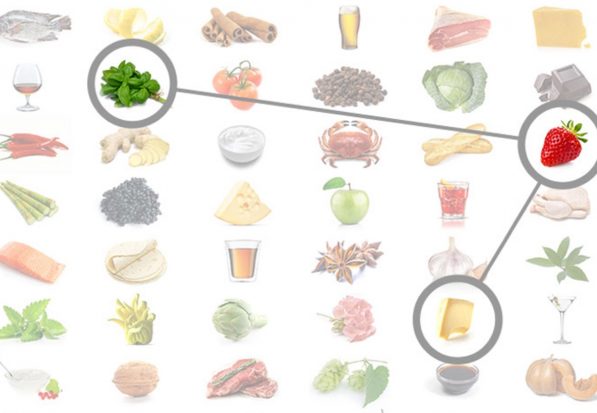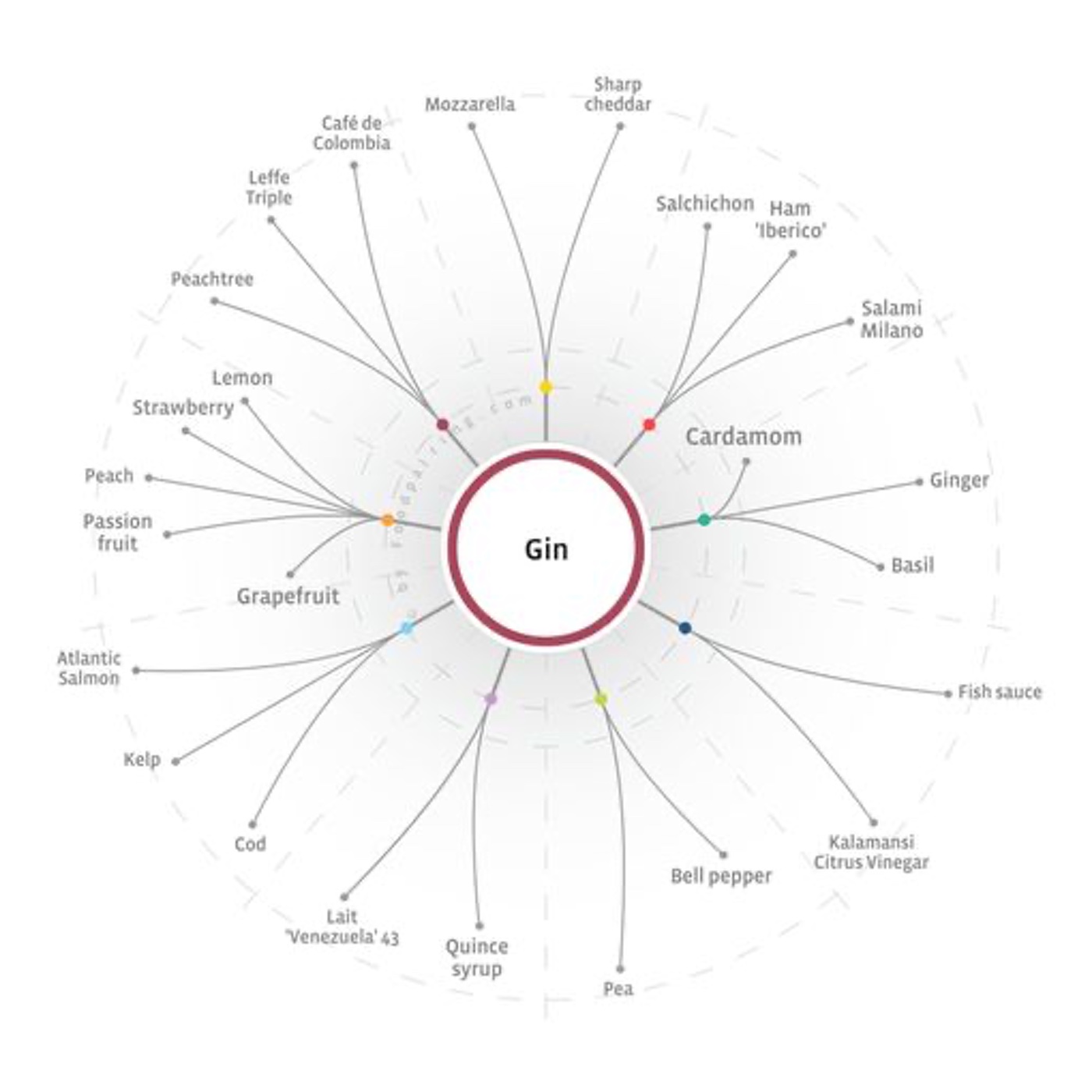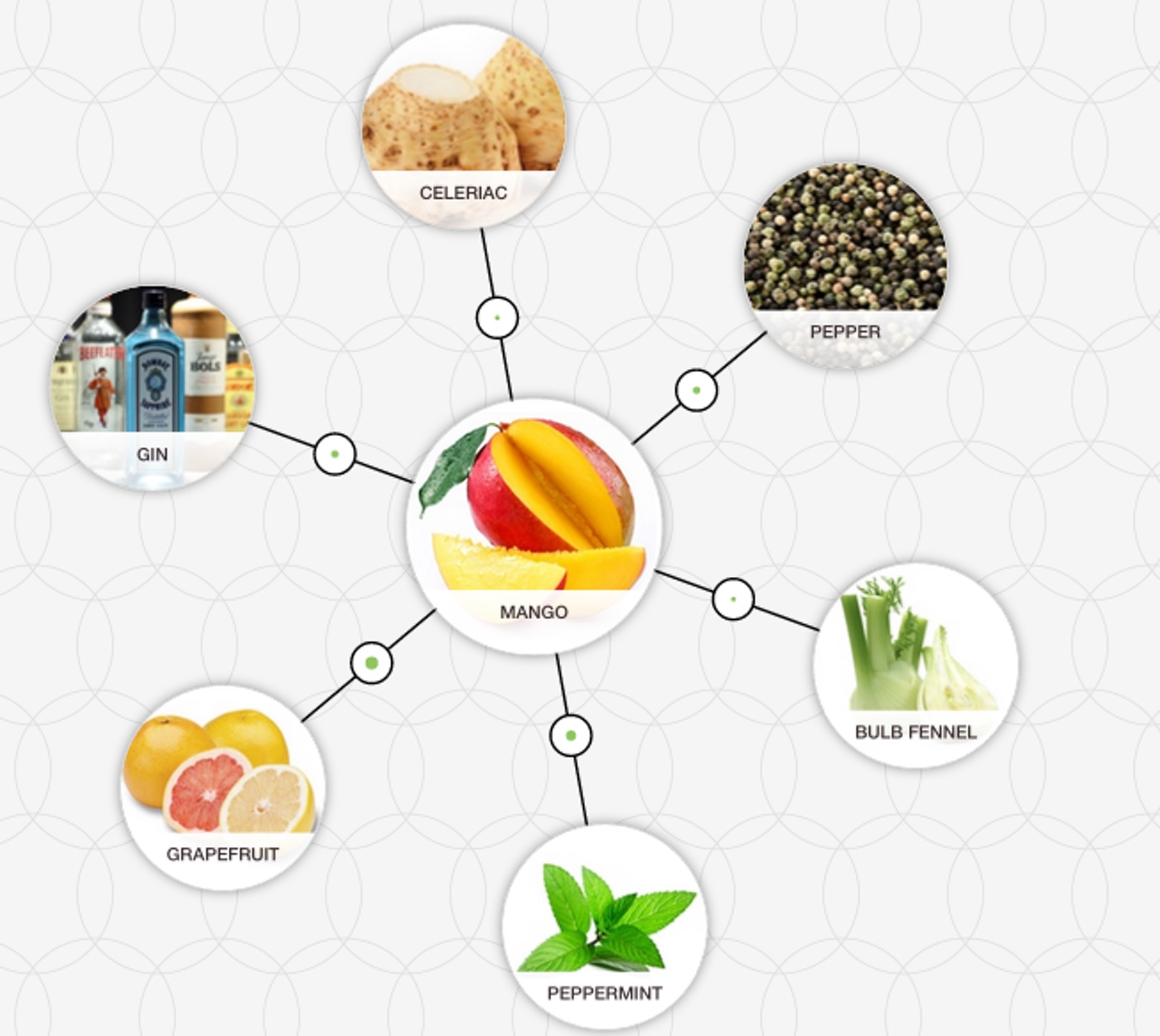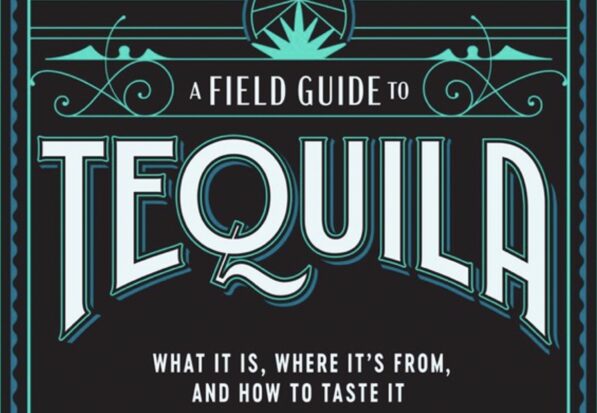When we think about flavour, we always think about taste, but it might surprise you to learn that 80% of flavour is actually aroma. So when you taste a new cocktail for the first time, most of that flavour that you think you perceive is actually what you can smell.
And this is why a scientist, a chef and an entrepreneur founded foodpairing.com as a food tech company in 2009. Between the three of them, the company has built the world’s largest flavour database to analyse and profile the aromas of everything from apples to tequila.
Understanding flavour through the aroma molecules may sound complicated but Peter Coucquyt, the chef of the trio, doesn’t believe that bartenders don’t need to get bogged down in the science. Instead, he sees Foodpairing as a way that they can expand what they create, by understanding what links various ingredients when combined in a drink.
For Coucquyt, being able to show which aroma molecules work together is all about providing insight. Whether it be through the company’s website or their new book, which will be released later this week, everything the company does is designed to provide that spark of creativity for chefs and bartenders.
“Sometimes you get inspired to combine some very really surprising things,” he explained. “You know already in advance that it will work because there is an aromatic link. The only thing you need to do then balances the drink and decide how they will use that ingredient; you might choose to infuse it or make a foam.
“It’s probably the same with bartenders,” he continued, “but I know a lot of chefs tend to stick with the ingredients that they know and they like. They find it difficult to add new ingredients and play around with different things. With Foodpairing you will see other possibilities that make you more creative. They can show you combinations that you might never have thought about, yet work very well together.”
 PIN IT
PIN ITPeter Coucquyt
The online tool on the brand’s website was launched in 2017 and at the time of writing, has over 3,000 ingredients completely analysed. “Every week, we are constantly analysing ingredients to add to the database to enlarge it,” he explained. “When you chose an ingredient, you get a lot of possible combinations.”
Although understanding what combines with your main ingredient is a vital first step in creation, Coucquyt explains that you can then go on to analyse your second ingredient and create links you may not have thought of before.
“We don’t just look at the flavours that will match your main ingredient but we can also look at the combination of your first and second ingredient. We are not just looking at the molecules that are in the main ingredient, but also the molecules that have been created by adding an ingredient,” he explained.
“You might start with rum and then make the connection to Kaffir Limes,” he says. “You can then look at what Kaffir Limes combine with. By doing that you might come across bananas and while rum may not have a direct connection to bananas, the Kaffir Lime makes an aromatic bridge between the two. You can build it up, looking at five, six, seven ingredients you can combine to make the drink.”
Both the website and the upcoming book have been designed to inspire food and drink pairings that will surprise, delight and impress. Coucquyt explains that the strength of the aromatic match is visualised on by green dots. The bigger the green dot is, the better the aromatic match.
While the book may be a reflection of what you can find in the online tool, Coucquyt explains that it goes into more of a deep-dive of the ingredients featured. The book focuses on 120 different ingredients, where they are able to go into more depth on each ingredients profile. But more importantly, the book shows that there is no right or wrong way to pair ingredients.
“The book is explaining the art and science of food pairing in two parts,” said Coucquyt. “The first part is about the science behind food pairing. So we give a little bit of the history, how we started. Then the second part goes into more depth about what is an aroma of an ingredient, what is an aroma molecule, how we can smell it, how we scientifically divide them into groups and categorize them.”
Now while we’ve all come across those elemental flavour wheels that explain aromas that are associated with coffee, chocolate or even whiskey, Coucquyt explains that the company needed to make their own classifications to be able to visualise all the aroma profiles in their database.
“We need to be able to visualise every ingredient, so without classification, we can visualise rum, vermouth but also coffee, vegetables and fruits. Foodpairing opens a whole new world of possible food combinations that are not influenced or restricted by cultural and traditional context.
This independence results in some surprising and unusual combinations. Once you look beyond the confines of your own favoured combinations, you will find an infinite number of potential pairings just waiting to be explored.”
Coucquyt explains that usually, people use the tool in one of two ways. The first way is if they have an idea and they want to check if that idea is working, or if there are aromatic matches. The second way is when they want to add a twist with something unexpected.
“Foodpairing not only explains why the food combinations we know and love work so well together (strawberries + chocolate, for example) but can also open up a whole new world of delicious pairings (strawberries + parmesan, say) that will transform not only the way we eat but also the way we drink,” he added.
Over the years, the company has worked with food & drink superstars, including Heston Blumenthal but also ambassadors from brands such as The Botanist Gin, Remi Martin, Bombay Sapphire and Zacapa Rum.
“I know that some brands have created some of their showcase cocktails, based on the information that we have given them. Really it’s about providing them with the inspiration to create drinks that really show off their spirits best.
“For example, for Zacapa, it was not only inspiration for cocktails,” he continued, “but also the inspiration to combine or to serve a rum with certain dishes. And that’s what it’s all about, showcasing the possibilities and creating the unexpected.”
For more information on the website tool, go to foodpairing.com
The book The Art & Science of Foodpairing, is available from October 1st










